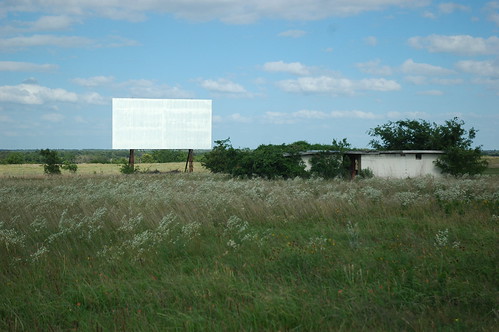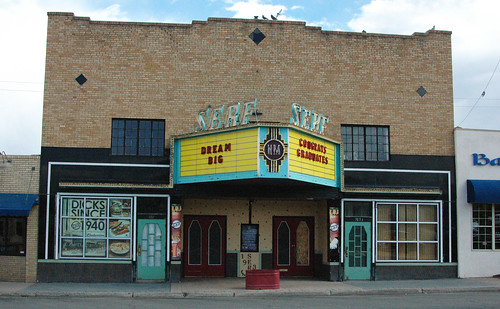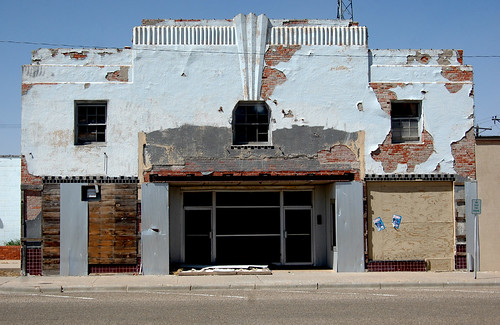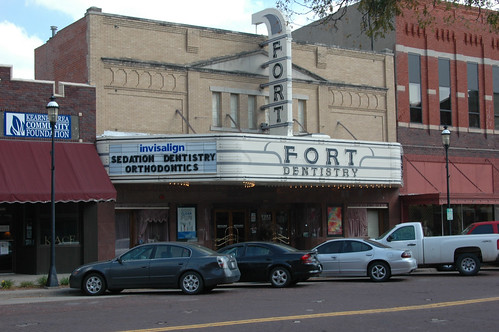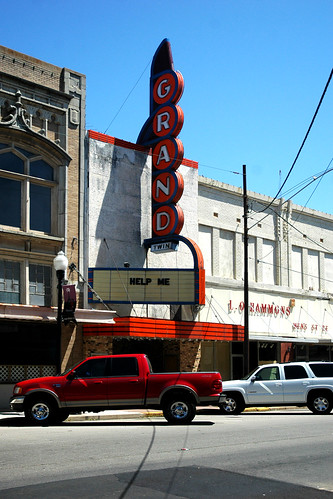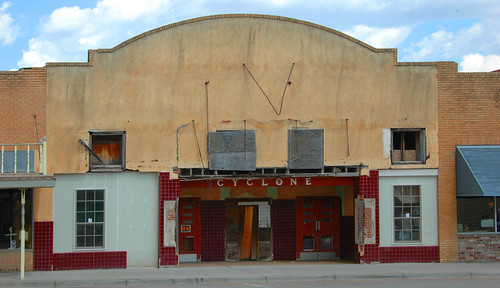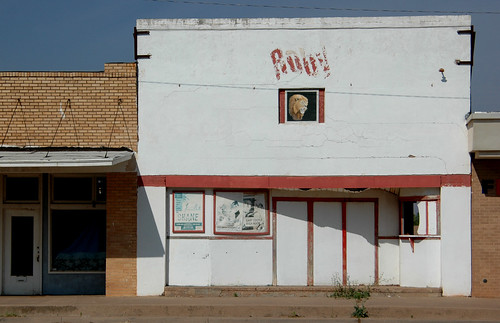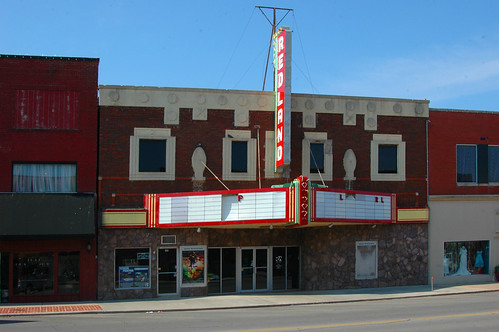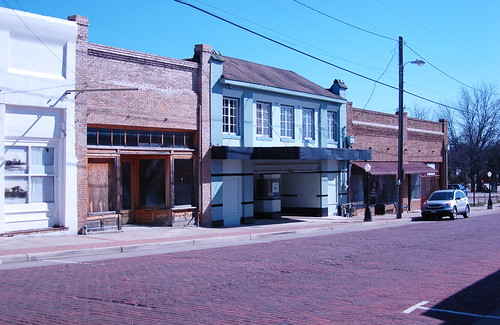#1 in this proposed 4-part series featured my paternal grandfather Edward James Scott and his forebears. His wife, my paternal grandmother was Mary, maiden name Midgley. I am fortunate that local genealogists linked to the Midgleys had already done much digging in the parish registers of East and North Yorkshire before I ventured down this family history rabbit hole. Thanks to them I've been able to delve much deeper into this particular part of my gene pool than I could manage in Grandad Scott's case.
MIDGLEY the name: Two possibilities:
1) an old Yorkshire name, probably first arising in West Yorkshire, where there's a village called Midgley; how, or if the East and North Yorkshire Midgley branch links to the village isn't clear.
2) A derivation of Michelson or Mitchelson. There is evidence that a Christopher Midgley on the Acklam Land Tax Assessments, in successive years, went from signing Chris. Michelson to Chris. Midgley. Christopher's father was John Mitchelson. I haven't yet connected John and Christopher to my direct line of Midgleys, but my forebears have clear connections to Acklam, so I'd say that it's highly likely that this is where my line of Midgleys got their name, rather than from a village in West Yorkshire.
My own relatives can be traced back to the mid-1700s; beyond that though, the families of several Midgley spouses, my 4th, 5th, 6th, 7th 8th 9th and 10th great grandmothers, can be traced back - and back - into the 1500s.
My Midgley line's earliest known character was a Richard Midgley probably of Sheriff Hutton, Yorkshire, born about 1734. His son Richard, born 1769 married Hannah Nichols on 6 December 1790 in Kirkby Grindlyth on the East Yorkshire Wolds. Richard the younger was Parish Clerk as well as being involved in some form of agricultural employment. He and Hannah had 10 children. Hannah, maiden name Hicks, hailed from Hutton Bushel, a village between Pickering and Scarborough.
Maps below show the general area involved in the family history included in this #2 chapter.
Click on an image for a bigger version.
Richard and Hannah's large family and their descendants formed a tangled Midgley network around the Wolds of East Yorkshire, North Yorkshire and the Moors. It was very easy to be led astray once entering this network, due to many similarities of first names in similar time spans. More than once I followed mistaken threads and had to start over.
Of Richard and Hannah's ten offspring, two are significant to my own line: Thomas Midgley born 10 June 1801, and Benjamin born 10 January 1812 - both recorded in Kirky Grindlyth parish, though the nearby village of Duggleby could well have been their home.
The reason I link to two members of Richard and Hannah's offspring: Benjamin's youngest daughter married one of Thomas's grandsons. That caused lots of confusion! Thomas Midgley and his wife Mary (nee Wallis) had a son, Abel. Abel and wife Elizabeth (nee Boyes) had a son, John Thomas who married Benjamin Midgley's youngest daughter Fanny.
John Thomas Midgley, born in 1861 in Acklam, and Fanny Midgley born 1863 in Duggleby are recorded as marrying in 1887. They became parents of William, born 1889, Emma Midgley, 1890, Ben Midgley, 1892, Tom Midgley, 1894, George Midgley, 1896 and Ida Midgley,1898. However, and it's a big however, in the census of 1891 there's another offspring listed as daughter of the couple, born 1885, before their marriage. This daughter, Mary, then aged 6, was my grandmother. By the 1901 census Grandma was listed as "servant to veterinary surgeon", and by 1911 she was married to Grandad Scott and mother of four, with six more to come.
Now - was Mary, my grandmother, the daughter of both partners, born before they married, or was she daughter of one partner only? Her name would still be Midgley either way. I'll never know this, it's a second brick wall in my family history, matching that of Grandad Scott's unknown father. The fact that Fanny and John Thomas were...(?) second cousins, or cousins once removed does mean that, in any event, the onward reach into the past, via Midgley spouses will remain relevant to my own genealogy. I think it more likely that Grandma Mary was definitely Fanny's daughter, if not also John Thomas's.
This was Mary Midgley/Grandma Scott:
I have hazy memories of her. She'd visit us during my young childhood, every Friday evening, never failed to leave a shilling for me. She was known as a sweet-natured, hard-working woman. She brought up 10 children of her own and several grandchildren whose parents were encountering difficulty. She attended "chapel" every Sunday, the strangely named Primitive Methodist Continuing Chapel. Grandma died in 1952.
I met Fanny Midgley, my great grandmother, just once when I was very young, around 4 or 5 years old I think. My only memory is of a lady in a long dark dress, and of feeling afraid of her. I was told by my parents, amid laughter, that my only comment to my great grandmother had been "I don't like you!" What a charmingly outspoken brat I had to be! I hereby apologise.
Fanny Midgley's father, as mentioned above, was Benjamin Midgley. Her mother was Mary, maiden name Bogg, born in Duggleby 1821. Mary Bogg's parents were Jonathan Bogg and Margaret Vasey. Whereas most of the later Midgleys were agricultural labourers of one sort or another, several of the Boggs, from various census entries, appear to have been tradesmen, such as grocer, postmaster, joiner.
Margaret Vasey, Jonathan Bogg's wife and my 3rd great grandmother was born in Allerston, North Yorkshire. Her family line is capable of being traced way back, via her father William Vasey.
VASEY:
Vasey the surname (and its several alternative spellings) is said to have originated with those involved in the Norman invasion of England. First recorded spelling of the family name is, it is thought, that of Robert L'enveiset, dated 1131, in the register of Rievaulx Abbey, in North Yorkshire, during the reign of King Henry 1st of England (1100 - 1135). Surnames became necessary when governments introduced personal taxation. Surnames in every country have continued to "develop" resulting in variations of the original spelling. L'enveiset became De Vesci; De Vesci became Vasey, Vasie or alternative spellings.
At a website 1066 Medieval Mosaic in the section titled THE BATTLE ABBEY ROLL. WITH SOME ACCOUNT OF THE NORMAN LINEAGES, the Vesci chapter outlines the De Vesci family's tangled ties with lands in a newly Norman England. My interest is in a particular area of Yorkshire, and place names there are mentioned as having been, at some point in the mists of time, in ownership of some member of the De Vesci family. Allerston, Hutton Bushell, Pickering Marishes are mentioned - all villages or areas which turn up regularly in relation to my Vasey connection.
It'd be good to feel fairly confident that the Vaseys named below had some kind of family link to those De Vesci characters from Norman France, but I have no proof. How the surname might have appeared in this area otherwise is puzzling though:
My Vasey line proceeds via: Margaret Vasey (my 3rd great grandmother), her father, William Vasey (1756-1823), his father Matthew of Marishes Vasey (1690-1784). Matthew's father was Thomas of Marishes Vasey (born between1640 &1665, died 1704). Thomas's father was Matthew of Boswell Moor Vasie (1603-1664) and his father was another Thomas Vasie, born 1580.
Place names involved are in a tightly bounded area around Allerston and Pickering (see map above). I haven't yet been able to identify "Boswell Moor", but suspect it could have been the name of a single farm or piece of land in the same general area as Marishes - on the edge of the Yorkshire Moors.
The last mentioned Thomas Vasie is my 8th great grandfather. There the direct Vasie name trail ends. Before leaving the Vaseys though, there's this (click on it for a bigger version). It must refer to the Matthew Vasey noted as "of Boswell Moor", due to the date. Which could be a clue that the location of Boswell Moor was really the same as Marishes, as in the name of his grandson Matthew.
Restoration of the Monarchy, after the Civil War and Oliver Cromwell's time in power, occurred in 1660. Prince Charles (King Charles the Second)whose father had been beheaded, had been in exile until 1660 by all accounts. I guess he could have slipped into England from Europe, to a quiet port on the Yorkshire coast - there were many - and made his way inland across the area near Allerston.
OWSTON
Another name of interest, linking to the Vaseys, comes via the wife of my 6th great grandfather Thomas of Marishes Vasey, she was Elizabeth Owston.
The name Owston almost certainly refers to a location. There's a village of Owston in South Yorkshire.
Some of the modern Owston family have taken their genealogical investigations to extreme levels - DNA testing. An article titled Owston DNA Studies: Another F2642 Y-DNA Mutation Reported refers. There has, so far, been no definite conclusion as to origins. A recent test shows links to France. That's not surprising because William the Conqueror, after victory in 1066, gifted his many royal relatives, nobles and hangers-on with big chunks of England to play with. Reference the De Vesci's (aka Vasey) above!
The Owston's history is tied up with the Vaseys:
Earliest known Owston is Peter, my 10th great-grandfather, and his wife Petronel my 10th great-grandmother. (Taken from THIS website)
Others linked to my Midgleys, through marriage and reaching back into the 1600s, include surnames Fiddis, Belt, Hopkin, Smartfoot and Lawne.
So...concluding my paternal family history wander, a photograph from a Scott family wedding at which both Grandma Scott (Midgley) and Grandad Scott were present, though oddly standing apart, he at the back of the group, she at the front. (Click on photo for a bigger version). In other wedding pictures the same thing happened - Grandad was obviously camera shy! The wedding here was of my father's younger brother, George, just after World War 2, so mid-1940s. My Dad is on George's left and my Mum, whose family history will follow in chapters #3 and #4, is the one in the snazzy hat behind Dad's left shoulder. Grandma Scott is to my Mum's left. Where's Grandad Scott? Hiding: back row second from right. See the Scott likeness, Grandad and sons? I'm not familiar with most others in the photo, relatives of Uncle George's wife, Nan, whose father was the guy in military uniform. I think Dad's youngest sister, Mary, is present but almost hidden behind Grandma; the rest of the Scott clan must have been about their business elsewhere on that occasion.
For Grandma Scott, the Midgleys, Boggs, Vaseys, Owstons, and all others who made up this branch of the family, I turn down an empty glass.
Helpful sources on Midgley family history:
Bonson History - Midgleys of the Wolds
Midgley Webpages, East Yorkshire.
MIDGLEY the name: Two possibilities:
1) an old Yorkshire name, probably first arising in West Yorkshire, where there's a village called Midgley; how, or if the East and North Yorkshire Midgley branch links to the village isn't clear.
2) A derivation of Michelson or Mitchelson. There is evidence that a Christopher Midgley on the Acklam Land Tax Assessments, in successive years, went from signing Chris. Michelson to Chris. Midgley. Christopher's father was John Mitchelson. I haven't yet connected John and Christopher to my direct line of Midgleys, but my forebears have clear connections to Acklam, so I'd say that it's highly likely that this is where my line of Midgleys got their name, rather than from a village in West Yorkshire.
My own relatives can be traced back to the mid-1700s; beyond that though, the families of several Midgley spouses, my 4th, 5th, 6th, 7th 8th 9th and 10th great grandmothers, can be traced back - and back - into the 1500s.
My Midgley line's earliest known character was a Richard Midgley probably of Sheriff Hutton, Yorkshire, born about 1734. His son Richard, born 1769 married Hannah Nichols on 6 December 1790 in Kirkby Grindlyth on the East Yorkshire Wolds. Richard the younger was Parish Clerk as well as being involved in some form of agricultural employment. He and Hannah had 10 children. Hannah, maiden name Hicks, hailed from Hutton Bushel, a village between Pickering and Scarborough.
Maps below show the general area involved in the family history included in this #2 chapter.
Click on an image for a bigger version.
Richard and Hannah's large family and their descendants formed a tangled Midgley network around the Wolds of East Yorkshire, North Yorkshire and the Moors. It was very easy to be led astray once entering this network, due to many similarities of first names in similar time spans. More than once I followed mistaken threads and had to start over.
Of Richard and Hannah's ten offspring, two are significant to my own line: Thomas Midgley born 10 June 1801, and Benjamin born 10 January 1812 - both recorded in Kirky Grindlyth parish, though the nearby village of Duggleby could well have been their home.
The reason I link to two members of Richard and Hannah's offspring: Benjamin's youngest daughter married one of Thomas's grandsons. That caused lots of confusion! Thomas Midgley and his wife Mary (nee Wallis) had a son, Abel. Abel and wife Elizabeth (nee Boyes) had a son, John Thomas who married Benjamin Midgley's youngest daughter Fanny.
John Thomas Midgley, born in 1861 in Acklam, and Fanny Midgley born 1863 in Duggleby are recorded as marrying in 1887. They became parents of William, born 1889, Emma Midgley, 1890, Ben Midgley, 1892, Tom Midgley, 1894, George Midgley, 1896 and Ida Midgley,1898. However, and it's a big however, in the census of 1891 there's another offspring listed as daughter of the couple, born 1885, before their marriage. This daughter, Mary, then aged 6, was my grandmother. By the 1901 census Grandma was listed as "servant to veterinary surgeon", and by 1911 she was married to Grandad Scott and mother of four, with six more to come.
Now - was Mary, my grandmother, the daughter of both partners, born before they married, or was she daughter of one partner only? Her name would still be Midgley either way. I'll never know this, it's a second brick wall in my family history, matching that of Grandad Scott's unknown father. The fact that Fanny and John Thomas were...(?) second cousins, or cousins once removed does mean that, in any event, the onward reach into the past, via Midgley spouses will remain relevant to my own genealogy. I think it more likely that Grandma Mary was definitely Fanny's daughter, if not also John Thomas's.
This was Mary Midgley/Grandma Scott:
I have hazy memories of her. She'd visit us during my young childhood, every Friday evening, never failed to leave a shilling for me. She was known as a sweet-natured, hard-working woman. She brought up 10 children of her own and several grandchildren whose parents were encountering difficulty. She attended "chapel" every Sunday, the strangely named Primitive Methodist Continuing Chapel. Grandma died in 1952.
I met Fanny Midgley, my great grandmother, just once when I was very young, around 4 or 5 years old I think. My only memory is of a lady in a long dark dress, and of feeling afraid of her. I was told by my parents, amid laughter, that my only comment to my great grandmother had been "I don't like you!" What a charmingly outspoken brat I had to be! I hereby apologise.
Fanny Midgley's father, as mentioned above, was Benjamin Midgley. Her mother was Mary, maiden name Bogg, born in Duggleby 1821. Mary Bogg's parents were Jonathan Bogg and Margaret Vasey. Whereas most of the later Midgleys were agricultural labourers of one sort or another, several of the Boggs, from various census entries, appear to have been tradesmen, such as grocer, postmaster, joiner.
Margaret Vasey, Jonathan Bogg's wife and my 3rd great grandmother was born in Allerston, North Yorkshire. Her family line is capable of being traced way back, via her father William Vasey.
VASEY:
 |
| Ruins of Rievaulx Abbey |
At a website 1066 Medieval Mosaic in the section titled THE BATTLE ABBEY ROLL. WITH SOME ACCOUNT OF THE NORMAN LINEAGES, the Vesci chapter outlines the De Vesci family's tangled ties with lands in a newly Norman England. My interest is in a particular area of Yorkshire, and place names there are mentioned as having been, at some point in the mists of time, in ownership of some member of the De Vesci family. Allerston, Hutton Bushell, Pickering Marishes are mentioned - all villages or areas which turn up regularly in relation to my Vasey connection.
It'd be good to feel fairly confident that the Vaseys named below had some kind of family link to those De Vesci characters from Norman France, but I have no proof. How the surname might have appeared in this area otherwise is puzzling though:
My Vasey line proceeds via: Margaret Vasey (my 3rd great grandmother), her father, William Vasey (1756-1823), his father Matthew of Marishes Vasey (1690-1784). Matthew's father was Thomas of Marishes Vasey (born between1640 &1665, died 1704). Thomas's father was Matthew of Boswell Moor Vasie (1603-1664) and his father was another Thomas Vasie, born 1580.
Place names involved are in a tightly bounded area around Allerston and Pickering (see map above). I haven't yet been able to identify "Boswell Moor", but suspect it could have been the name of a single farm or piece of land in the same general area as Marishes - on the edge of the Yorkshire Moors.
The last mentioned Thomas Vasie is my 8th great grandfather. There the direct Vasie name trail ends. Before leaving the Vaseys though, there's this (click on it for a bigger version). It must refer to the Matthew Vasey noted as "of Boswell Moor", due to the date. Which could be a clue that the location of Boswell Moor was really the same as Marishes, as in the name of his grandson Matthew.
 |
| King Charles II |
Restoration of the Monarchy, after the Civil War and Oliver Cromwell's time in power, occurred in 1660. Prince Charles (King Charles the Second)whose father had been beheaded, had been in exile until 1660 by all accounts. I guess he could have slipped into England from Europe, to a quiet port on the Yorkshire coast - there were many - and made his way inland across the area near Allerston.
OWSTON
Another name of interest, linking to the Vaseys, comes via the wife of my 6th great grandfather Thomas of Marishes Vasey, she was Elizabeth Owston.
The name Owston almost certainly refers to a location. There's a village of Owston in South Yorkshire.
Some of the modern Owston family have taken their genealogical investigations to extreme levels - DNA testing. An article titled Owston DNA Studies: Another F2642 Y-DNA Mutation Reported refers. There has, so far, been no definite conclusion as to origins. A recent test shows links to France. That's not surprising because William the Conqueror, after victory in 1066, gifted his many royal relatives, nobles and hangers-on with big chunks of England to play with. Reference the De Vesci's (aka Vasey) above!
The Owston's history is tied up with the Vaseys:
Earliest known Owston is Peter, my 10th great-grandfather, and his wife Petronel my 10th great-grandmother. (Taken from THIS website)
Peter Owston the husbandman of Sherburn, died in 1568 leaving quite a young family made up of three sons, all minors (under twenty one years)....... Peter lived through interesting times. He would have probably been born during the reign of King Henry VIII, seen the abolition of the Monasteries, the rise of Protestantism, possibly heard of the Pilgrimage of Grace and known about the other risings in the North. Petronel survived at East Heslerton with her second husband and was probably the "Widow Borman" who was buried on the 7th April 1594 at West Heslerton.In spite of misty notions that "we" (via Owston and Vasey connections) could possibly have roots originating in characters involved in the Norman invasion of England, most of my ancestors have remained within the levels of, at best yeoman (owned own farm), or husbandman (tenant or smallholder); the majority, pre-World War 1, were just lowly agricultural labourers, the females domestic servants to the gentry.
Others linked to my Midgleys, through marriage and reaching back into the 1600s, include surnames Fiddis, Belt, Hopkin, Smartfoot and Lawne.
So...concluding my paternal family history wander, a photograph from a Scott family wedding at which both Grandma Scott (Midgley) and Grandad Scott were present, though oddly standing apart, he at the back of the group, she at the front. (Click on photo for a bigger version). In other wedding pictures the same thing happened - Grandad was obviously camera shy! The wedding here was of my father's younger brother, George, just after World War 2, so mid-1940s. My Dad is on George's left and my Mum, whose family history will follow in chapters #3 and #4, is the one in the snazzy hat behind Dad's left shoulder. Grandma Scott is to my Mum's left. Where's Grandad Scott? Hiding: back row second from right. See the Scott likeness, Grandad and sons? I'm not familiar with most others in the photo, relatives of Uncle George's wife, Nan, whose father was the guy in military uniform. I think Dad's youngest sister, Mary, is present but almost hidden behind Grandma; the rest of the Scott clan must have been about their business elsewhere on that occasion.
For Grandma Scott, the Midgleys, Boggs, Vaseys, Owstons, and all others who made up this branch of the family, I turn down an empty glass.
And when Thyself with shining foot shall pass
Among the guests star-scatter'd on the grass,
And in thy joyous errand reach the spot
Where I made one - turn down an empty glass!
Helpful sources on Midgley family history:
Bonson History - Midgleys of the Wolds
Midgley Webpages, East Yorkshire.





















